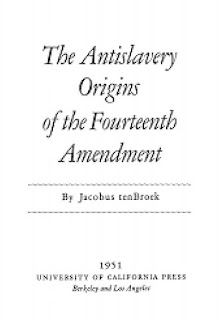“Handicap Removed”: An Alternative Path to the Social Model of Disability by Craig Rustici
I am grateful to have had the opportunity to participate in the Center’s colloquia and, on November 15, 2023, to present my research into sources of the social model of disability.
The social model created a foundation for both disability studies and the disability rights movement of the 1970s and 1980s, which, in turn, prompted passage of the 1990 Americans with Disabilities Act. It challenged the prevailing view of disability as a pitiable, personal misfortune to be cured, if possible, by medical practitioners. Instead, the social model assumed that physical or mental anomalies only became disabilities in a disabling physical or social environment. Using a wheelchair, for example, is not much of a disability in a built environment equipped with ramps, elevators, electric doors, and sufficiently wide doorways. An anomaly becomes a disability only when society makes it so. This view prompted scholars to study disability as a social construct, like gender. It also prompted activists to press for social and physical environments that no longer disabled.
Where did the social model originate? Michael Oliver and Tom Shakespeare have traced it to The Fundamental Principles of Disability, a 1976 manifesto published by the British Union of the Physically Impaired against Segregation (UPIAS). There, UPIAS asserts, “it is society which disables physically impaired people. Disability is something imposed on top of our impairments, by the way we are unnecessarily isolated and excluded from full participation in society.” I was surprised and intrigued, therefore, to find this view expressed a decade earlier in a 13-minute film Hofstra University commissioned to promote campus accessibility.
In 1963, years before the Architectural Barriers Act (1968) mandated that federally funded buildings must be accessible to people with disabilities and decades before passage of the ADA (1990), Hofstra’s Board of Trustees resolved to make the campus architecturally barrier free. In addition to striving for physical accessibility on its own campus, Hofstra promoted accessibility at other schools through publications and the 1966 film. The opening shot of that film All Things on Wheels Aren’t Equal presents a key unlocking a wheelchair lift, as the unseen narrator declares, “Handicap removed.” By suggesting that an accessible environment eliminates a handicap, this scene anticipates the social model of disability. A few moments later, the narrator again anticipates the social model by asserting, “There are over a million disabled people under the age of twenty-one handicapped by a curb, a flight of stairs, something out of reach.” Here, the physical environment rather than the wheelchair user’s physical impairment “handicaps” or disables.
What inspired the expression of a nascent social model in the Hofstra film, a decade before publication of the UPIAS manifesto? Tracing that expression and the ideas underlying it through the work of Hofstra psychologist, Harold Yuker, whom the film credits identify as “Project Director,” I have found their source in books written earlier in the twentieth century by the pioneering rehabilitation physician Henry Kessler.
In a 1935 book with the decidedly dated title The Crippled and the Disabled, Kessler writes, “there have developed social attitudes and legal limitations which seriously handicap the . . . disabled in their efforts to earn a livelihood.” This statement unequivocally asserts, to use more contemporary diction, that the social and legal environment disables, that is, causes physical (and perhaps mental) impairments to function as disabilities. Kessler goes on, in a 1947 book, to contrast social and medical models: “The definition of physical handicap, then, must be necessarily social and eco-nomic rather than medical . . . .”
Kessler understands people with disabilities as a disadvantaged minority, comparable to racial and ethnic minorities in the United States. His acute appreciation of a disabling social environment prompts him to ask in 1947, using the terminology of his day, whether the category “physically handicapped” should “include the social disabilities as-sociated with the racial features of the Semite, or the color features and pigmentation of the Negro and Chinese?” Of course, the putatively distinctive somatic traits of Jews, Blacks, and Asians do not constitute physical defects, but in the culture he addresses they do amount to “social handicaps.” Certainly, by the standard articulated in the UPIAS Fundamental Principles, being “isolated and excluded from full participation in society,” those minorities were disabled. In fact, as Dennis Tyler has documented, texts as dissimilar as the majority decision in Plessy v. Ferguson (1896) and an early, 1892 essay by James Weldon Johnson, author of The Autobiography of An Ex-Colored Man (1912) used the term “disabilities” to name the oppression imposed upon Black Americans.
Why didn’t Kessler’s 1947 call for “organized political and social action,” informed by a recognition that society disables, produce disability activism matching that found in the 1970s? Social-movement theories offer some answers. Political opportunity theory contends, as its name implies, that movements thrive when political systems are open to change. According to David Pettinicchio, though, early in the twentieth century a disability policy monopoly formed, through the collaboration of legislators, administrators. service professionals and interest groups. Consequently, for decades, the presumed solution to disability was not social change but rather more rehabilitation services to help people with disabilities integrate into society as it was. Threats of cutbacks and austerity under the Nixon administration eventually opened policy makers to newer, civil rights paradigms and set the stage for the disability rights movement.
As Allison Carey notes, social movements also often depend upon a recognized collective identity. In the United States in the first half of the twentieth century, though, cross-disability organizations were rare, far outnumbered by “single-issue,” single disability groups.
Additionally, recognizing that people living with impairments experience “social disabilities” much like those oppressing Jews, Blacks, and Asians was more empowering after effective strategies for combatting the social disabilities of such minorities had emerged. In the 1950s and 1960s, the Black civil rights movement developed strategies that disability advocates would later adopt. For example, before passing the Americans with Disabilities Act (1990), legislators attempted to amend the 1964 Civil Rights Act to prohibit discrimination based on disability. Advocates also drew upon Brown v. Board of Education (1954) to argue that separate “paratransit” systems were inherently unequal.
Civil rights and disability rights advocates contributed to each other’s efforts. Thurgood Marshall readily acknowledged that lawyers preparing the winning brief in Brown v. Board drew upon research the founding president of the National Federation of the Blind, Jacobus tenBroek, published in his 1951 book The Antislavery Origins of the Fourteenth Amendment. Later, by supplying daily hot meals to participants in the 1977 sit-in at the San Francisco office of the Department of Health, Education and Welfare, the Black Panther Party enabled those protestors to hold out for twenty-six days and to successfully pressure the Carter Administration to implement provisions of the 1974 Rehabilitation Act that prohibited federally funded institutions from discriminating against people with disabilities.
Although Kessler’s writing did not immediately produce a disability rights movement, Pettinicchio finds continuities between the rehabilitation movement that Kessler led and later disability activism. Rehabilitation practitioners cultivated disability identity by viewing people with disabilities less as individuals with disparate conditions and more as a collective client constituency. They cultivated activism by encouraging advocacy groups to lobby legislators for sustained or expanded rehabilitation services. They thus prepared the way for a civil rights approach.
Hofstra students, served by the accessibility initiatives promoted in the film All Things on Wheals Aren’t Equal, took up that approach. Connie Panzarino, for example, organized a disability student group on campus, joined the cross-disability organization Disabled in Action, and later founded the Disabled Lesbian Alliance. After graduating from Hofstra and Hofstra Law, Paul Hearne, who lived with osteogenesis imperfecta, founded one of the first disability law centers in the U.S. and later, as director of the National Council on Disability, helped write and promote the 1990 Americans with Disabilities Act. Perhaps, early encounters with the social model here prepared these alums to take up that work.
Dr. Craig M. Rustici a Professor of English and Director of Disability Studies at Hofstra University. He is the faculty advisor to DREAM Hofstra, the local chapter of Disability Rights, Education, Activism, and Mentoring. His scholarship includes research into disability activism on the Hofstra campus.






Comments
Post a Comment